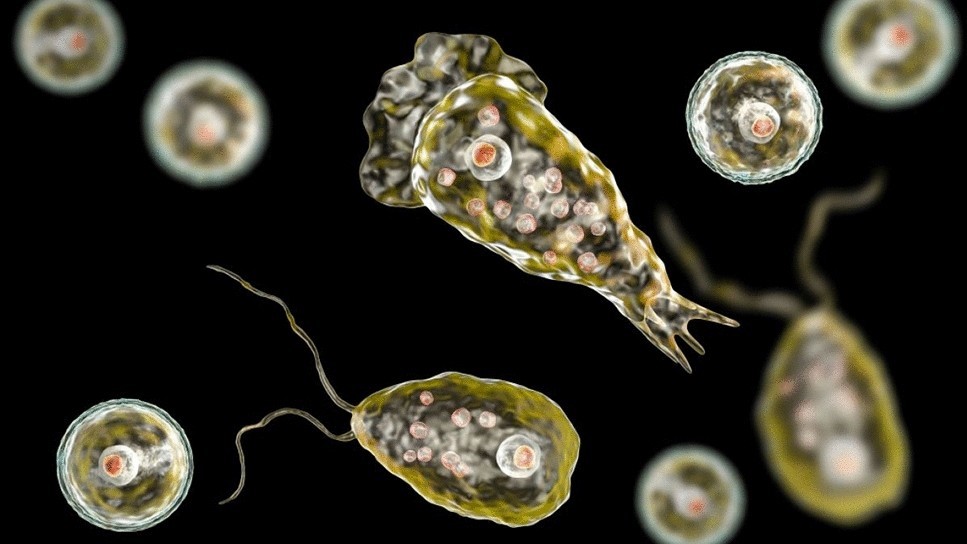Description

Source: IndianExpress
Disclaimer: Copyright infringement not intended.
Context
- Naegleria fowleri, commonly known as the "brain-eating amoeba," is a free-living amoeba that causes primary amebic meningoencephalitis (PAM), a rare and often fatal brain infection.
- This organism thrives in warm freshwater environments and has recently been responsible for the death of a young girl in Kerala, India.
Details
Classification
- Domain: Eukaryota
- Kingdom: Excavata
- Phylum: Percolozoa
- Class: Heterolobosea
- Order: Schizopyrenida
- Family: Vahlkampfiidae
- Genus: Naegleria
- Species: N. fowleri
Morphology
Naegleria fowleri exists in three forms:
- Cyst:
- Environmentally resistant, dormant form.
- Spherical shape, thick-walled.
- Trophozoite:
- Feeding and dividing form.
- Amoeboid shape with pseudopodia.
- Infective form in humans.
- Flagellate:
- Transitional form.
- Pear-shaped with two flagella.
- Non-feeding and temporary.
Habitat and Transmission
- Natural Habitat:
- Warm freshwater bodies such as lakes, rivers, hot springs, and poorly maintained swimming pools.
- Optimal growth at temperatures up to 115°F (46°C).
- Mode of Transmission:
- Naegleria fowleri infects humans when contaminated water enters the body through the nose, often during swimming or other water activities.
- The amoeba travels from the nasal passages to the brain, causing severe infection.
- Not transmitted through drinking contaminated water or from person to person.
Pathogenesis
- Primary Amebic Meningoencephalitis (PAM): The trophozoite form invades the brain and meninges.

Symptoms of Primary Amebic Meningoencephalitis (PAM)
- Initial Symptoms:
- Headache
- Fever
- Nausea
- Vomiting
- Progressive Symptoms:
- Stiff neck
- Confusion
- Seizures
- Hallucinations
- Coma
- Prognosis:
- Most individuals with PAM die within 1 to 18 days after symptom onset. The infection typically leads to coma and death within approximately 5 days.
Epidemiology
- Global Occurrence:
- Found worldwide in warm climates.
- Extremely rare, with fewer than 200 cases reported in the United States since 1962.
- Incidence in India:
- 20 reported cases of PAM, with the recent case in Kerala being the seventh in the state.
- Previous cases have been reported in Alappuzha, Malappuram, Kozhikode, and Thrissur.
Sources:
IndianExpress
|
PRACTICE QUESTION
Q. Which of the following preventive measures can reduce the risk of Naegleria fowleri infection?
- Avoiding swimming in warm freshwater bodies.
- Using nose clips while swimming or diving in freshwater.
- Ensuring proper chlorination and maintenance of swimming pools.
- Drinking only filtered or bottled water.
Select the correct answer using the codes given below:
(a) 1, 2, and 3 only
(b) 1, 2, and 4 only
(c) 2, 3, and 4 only
(d) 1, 3, and 4 only
Answer: (a)
|
















